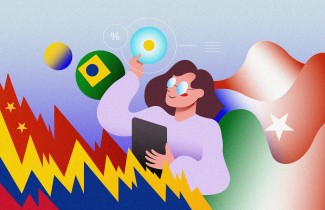Repositioning on the Global Trading Arena
The new reality calls for a new governance structure for global trade and investment

Socio-economic structures, including types of government and markets, economic, political and social institutions, and chains for the production and distribution of goods and services, are shaped by the pressures of economic and political actors, megatrends and technological changes. Throughout history, diverse events have resulted in almost instantaneous changes or responses in global and regional economic activity. The COVID-19 pandemic is just one such event.
Globalization, or deglobalization, whichever way we want to approach it, will continue to be present, but now the challenge for leaders is to understand the new configuration of the large value chains and the connectivity and exchange of resources, people and information resulting from the economic shock of the pandemic.
Leaders in international trade have existed and will continue to exist, but it is clear that the world will have a new vision of China, the US and Germany, to name just a few countries that have so far led their regions in foreign trade. Forces will coexist in all nations that, on the one hand, will promote greater efficiency in production and distribution – necessarily implying exchanging goods and services across borders – and, on the other, that will promote and favor the production and consumption of domestic goods.
Producing goods and services efficiently requires countries to continue taking advantage of the comparative and competitive advantages they each have, and to incorporate the parts and components with the greatest cost/benefit. However, at the same time, there will be sectors that promote and favor the production and use of domestic goods and services instead (such as those affected by the new T-MEC). It is unlikely that any country can subsist on its own resources. Very possibly, for a time, we will see how the governance of global trade and investment is redefined, a process that may take a year or perhaps a little longer. Later, when a new scheme of formal institutions and a new regulatory framework provide a new certainty, it will be possible to define global volumes and trade flows.
After the misgivings expressed by institutions such as the World Health Organization, the International Monetary Fund and the Organization of American States, multilateral organizations should be subjected to very significant scrutiny. Organizations create huge bureaucracies that move slowly and do not necessarily respond with agility to either gradual or sudden changes in society. These organisms run the risk of thinking of themselves as an end rather than a means. They will necessarily have to be much more efficient and transparent, involve society and governments, and be much less costly. Their survival will depend, like any other organization, on their ability to be part of the solution and not part of the problem.
All trade blocs are a result of many years of negotiation between the countries. The post-COVID-19 setting will surely force countries grouped into blocs to review different parts or sections of their previously-made agreements and commitments and, given the new reality and economic capacity of each particular country, begin a dialogue and possibly a rethinking of some clauses, according to the mechanisms defined in the agreements.
In this redefinition phase, bilateral investment agreements and the organizations and mechanisms for the protection and guarantee of global investments will also face the scrutiny of the new reality, and it will surely be necessary to review the promotion, regulation and protection schemes of global investments.
Additionally, countries in need of foreign investment – such as Mexico – must rethink their own comparative value offer and mechanisms for attracting direct investment. All countries must design new programs that promote the different strategic and traditional comparative advantages of their different sectors.
Article originally published in Dinero en Imagen.



